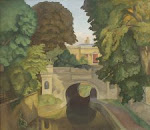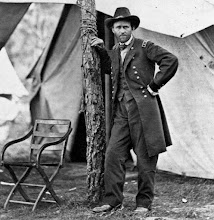My introduction to English field names came through a chapter in George Ewart Evans's Ask the Fellows Who Cut the Hay (1956), a book about the now-vanished life of rural Suffolk. Much later, I came across the following poem by Clive Sansom (1910-1981). Perhaps the poem provides another approach to the topic of the wordlessness (but not silence) of the World -- and our own use of words as a response.
Field Names
Our name-givers loved the World and loved the Word:
These two delights are only an ell apart.
Coupling, they gave birth to those field names
That map the earth in the language of the heart:
'Wooden Cabbage', 'Three Men's Field',
'Charity Bottom', 'Doom',
'Perrymans', 'God's Blessing Green',
'Fishponds' and 'Bramble Coomb'.
'Reddleman's', Bedlam', 'Dancing Hill',
'Troy Town', and 'Starvecrow Land',
'Lottery', 'Drummer's Castle', 'Fleet',
'Crocker's Knap', 'Flower-in-Hand'. . . .
Lavish as wildflowers in a Dorset hedgerow,
Fragrant as their names before the botanists came,
They startle the lawyers' deeds with their heart-language
And stake, in some fragment of England, their loving claim.
Clive Sansom, Dorset Village (1962).
John Aldridge, "Stubble Field, Thaxted" (1968)
Subscribe to:
Post Comments (Atom)




4 comments:
I think the terrain I write about might be renamed "Starvecrow Land"! Love the line about startling the lawyers' deeds....
Interesting how poetry using field names seems to emphasise the emotional and historical connection between human activity and the landscape, while the use of tree names for built development often (if unintentionally) only serves to emphasis the removal of such a landscape for some suburban street - at best now shaded by a smattering of alien species such Japanese Flowering Cherry and Leylandii. Reading Sansom's 'Field Names' I was reminded of a short poem by Wendell Berry (b.1934):
Walnut St., Oak St., Sycamore St., etc.
So this is what happened
to the names of trees !
I heard them fly up,
whistling, out of the woods.
But I did not know
where they had gone.
Shelley: as always, thank you for your thoughts. Yes, "Starvecrow Land" is very good, isn't it? I particularly like "Bedlam" and "Flower-in-Hand" as well. I agree that "they startle the lawyers' deeds" is a fine and unexpected touch.
Thanks again.
Mr. Noel-Tod: thank you for visiting again. And thank you for the poem by Wendell Berry. He is right: I don't know how it is in England, but over here most towns of a certain size (even, sometimes, those in the desert) have their Walnut, Oak, Sycamore, Elm, Maple (et cetera) Streets.
But we do go further afield: a friend of mine once lived on Shakespeare Street in Houston. Among the roads to the south of Shakespeare Street are: Dryden Road, Swift Boulevard, Addison Road, Goldsmith Street, and Wordsworth Street, with a sylvan Chaucer Drive tucked away to the northeast.
As ever, thank you for your thoughts.
Post a Comment